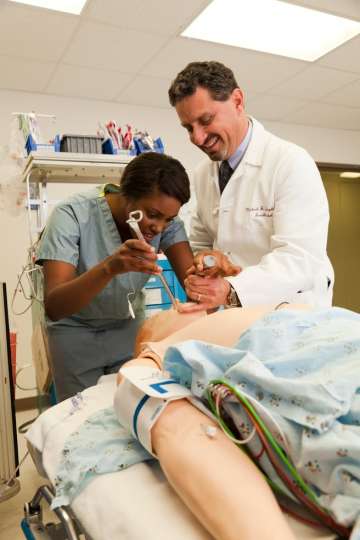Specialty Training and Advanced Research (STAR) Program
Combined Residency / PhD Program / STAR

Extraordinary advances in scientific research and the sophisticated use of new therapeutic agents are creating a growing need for clinicians who can form a bridge between the laboratory and the operating room. Our department and the UCLA Graduate Programs in Bioscience offer the best in residency and doctoral training to prospective academicians.
Many physicians in training realize that they would like to devote themselves to a career in academic medical research at a time when the opportunity for MD-PhD training has passed. These considerations led UCLA to create the Specialty Training and Advanced Research (STAR) Program, so that residents can combine clinical and research training. Selected applicants will have the opportunity to earn a PhD in combination with their anesthesiology residency training.
Research in Anesthesiology
There are several world-renowned laboratories in the Department of Anesthesiology at UCLA in which residents can pursue varied research projects, many of which are related to anesthesiology, including studies of the molecular mechanisms of action of general anesthetic and analgesic agents. Anesthesiology residents in the STAR program may also choose a research project in one of several hundred other laboratories at UCLA. Research in neuroscience is particularly popular, and there are nearly 200 laboratories associated with the Interdepartmental Neuroscience Graduate Program alone.
The Neuroscience Program
The Neuroscience Program is based in the Brain Research Institute and was established at UCLA in 1965. It is in the top ten PhD programs of its kind in the nation. More neuroscience research is performed at UCLA than on almost any other campus in the world. All disciplines are well represented, including molecular, cellular, systems, developmental, behavioral and clinical neuroscience. An outstanding group of imaging laboratories uses positron emission tomography and magnetic resonance imaging, allowing the noninvasive visualization of the structure and function of the human nervous system.
Combined Residency and PhD Curriculum
Successful applicants will complete three years of anesthesiology residency, beginning their research during the elective rotations. The following two to three years will be spent completing course requirements and a dissertation for a PhD in a chosen discipline. The specific requirements will be determined on an individual basis by the applicant, the STAR Committee, and the admissions committee of the PhD program of the applicant's choosing. Medical school courses are likely to satisfy some of the PhD course requirements.
Salary
Residents will be paid at the appropriate post-graduate year residency rate as determined by the UCLA School of Medicine or, when appropriate, at the Clinical Instructor level. Salaries will be guaranteed by the Department of Anesthesiology, although participants are encouraged to apply for fellowships.
More information
For more information about the anesthesiology residency program and the research opportunities available to anesthesiology residents at UCLA, please contact:
Maxime Cannesson, MD, PhD
Professor and Chair
Department of Anesthesiology and Perioperative Medicine
Ronald Reagan UCLA Medical Center
757 Westwood Plaza, Suite 3325
Los Angeles, CA 90095-7403
[email protected]
Additional information on the STAR program can be accessed at:
http://medschool.ucla.edu/star